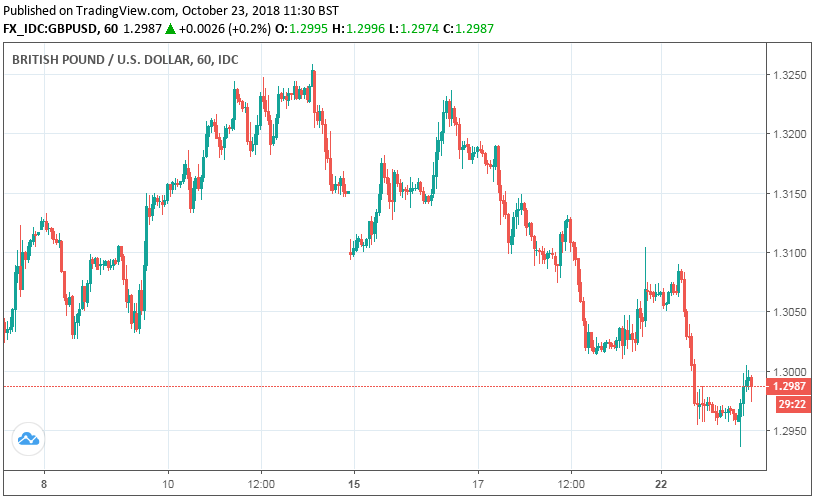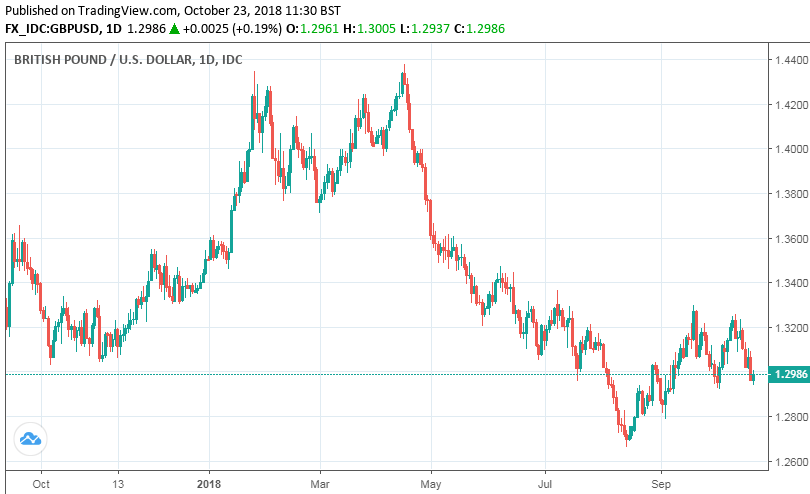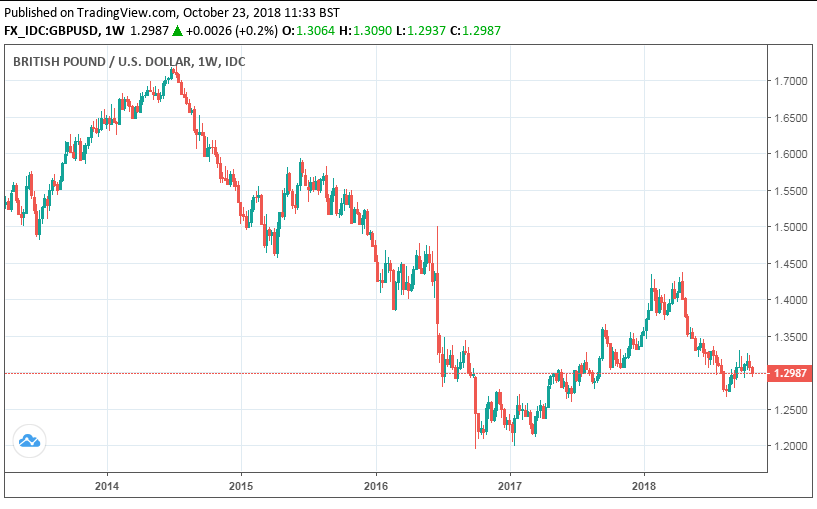The Pound-to-Dollar Rate is Headed South for the Winter as Brexit Talks Go Down to the Wire says Capital Economics
- Written by: James Skinner
-

© IRStone, Adobe Stock
Sterling has fallen sharply against the Dollar in the last week after the Brexit negotiations hit another road block, but the worst is still to come according to economists at Capital Economics, who are warning that the Pound-to-Dollar rate is headed south for the winter.
The Pound has fallen close to 1.5% against the Dollar, leaving it below the 1.30 threshold, after negotiators from both sides of the English Channel failed to reach agreement on terms of the U.K.'s withdrawal from the EU in time for the European Council summit that concluded on October 17.
Disagreement over the so called "backstop" solution for managing the Northern Irish border in the event a deal on the future relationship cannot be struck at a later date has once again stymied progress.
Failure has led markets to begin contemplating the seemingly-increased risk of an exit from the EU without any kind of agreement whatsoever, which would see the U.K. default to trading with the bloc on World Trade Organization terms. Most economists say this would deal a blow to the U.K. economy.

Above: Pound-to-Dollar rate shown at hourly intervals.
"The failure to make a deal might have been expected to take a bigger toll on sterling. Indeed, it seems that, at least according to betting markets, the odds of a no deal have increased to about 50%, compared to 35% in early October. There are a number of possible reasons for this resilience," says Thomas Pugh, an economist at Capital Economics.
Pugh says investors are already highly pessimistic in their outlook for the Pound and that this could explain why last week's market reaction to the supposedly-mounting threat of a "no deal Brexit" was so mild.
He also flags the probability of such an outcome, implied by odds in betting markets, is less than it was back in August when talks were last roadblocked and speculation about the future of Prime Minister Theresa May was rampant.
"Third, it could be because it is not clear what a no deal would look like. In an orderly no deal scenario we estimate that UK GDP could be just 1 [percentage point] or so lower than with a deal, a significant hit, but hardly a calamity," Pugh writes, in a note to clients Monday.
Now the negotiations have hit a wall again most analysts and pundits are stacking their chips on a December meeting of political leaders from across the EU as the next most likely point at which a deal might be announced.
But Pugh and the Capital Economics team are warning that the talks are likely to go on for much longer, right down to the wire and potentially as far as March 2019, so Sterling will suffer as a result.

Above: Pound-to-Dollar rate shown at daily intervals.
The U.K. is due to depart the EU on March 29, 2019 but a so called transition period that is due to run from then until December 2020 will ensure nothing changes for a while after the exit date, assuming the Withdrawal Agreement and its "backstop" for the Irish border are agreed before then.
After the U.K. has left the EU the current plan is for both parties to enter talks about a possible future trading relationship. Although by then, the EU will have secured a number of binding commitments from the U.K. that will remove much, of not all, of the incentive for it to negotiate an alternative.
This, among other things, has been a significant bone of contention for Brexit-supporting U.K. lawmakers that has contributed to divisions, animosity and instability within the parliament in Westminster. Speculation flared again at the weekend about a possible challenge to PM May's leadership in coming days.
"In any case, the pound would be unlikely to fall as far as after the referendum as it is no longer so highly valued. Indeed, cable is now roughly in line with its purchasing power parity measure compared to being almost 10% above the measure prior to the referendum," Pugh says.

Above: Pound-to-Dollar rate shown at weekly intervals.
The binding commitments that are set to be included in the Withdrawal Agreement will have filled the black hole in the EU's budget that is set to be opened up by the U.K.'s departure from the bloc, and may also commit the U.K. to remaining inside the customs union and parts of the EU single market in the event a deal is not reached.
Such an outcome will substantially weaken, if not obliterate, the U.K.'s hand in the next set of negotiations because the worst case scenario for the EU at the point will be one where it has nothing obvious to lose from failing to reach a deal on the future relationship.
The EU could even gain from such a failure, to the extent that continued customs union membership impedes the U.K.'s ability to tailor customs and trade policies to its own post-Brexit requirements and leaves the British parliament subordinate to the EU legislature in some respects.
"Our central scenario is still for the UK and the EU to come to an agreement, albeit at the last minute. However, the bigger hurdle is the UK Parliamentary vote as there are enough Eurosceptic MPs and members of the DUP to prevent a deal gaining Parliamentary approval," warns Pugh.
The Pound-to-Dollar rate was quoted 0.13% lower at 1.2979 during the Tuesday session. It has fallen by 3.8% so far in 2018 and remains more than 10% below the 1.45 level it was at on the night of the Brexit referendum in June 2016.
"The rocky road ahead suggests that there will be further downward pressure on the pound. We expect sterling to pull back to $1.25 by the end of the year. But even in the scenario in which no deal is reached, the fall will still be smaller than after the initial Brexit vote," Pugh concludes.
Advertisement
Get up to 5% more foreign exchange by using a specialist provider to get closer to the real market rate and avoid the gaping spreads charged by your bank when providing currency. Learn more here




